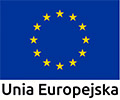The boundaries of the former extermination camp were marked with two-meter, severely hewn stones. In front of the symbolic entrance gate there are concrete boards with a carved short history of the Treblinka II Extermination Camp. A paved road runs to the site of the commemoration, which is routed at the site of the main camp road. Crossing the camp gate, on the right side there are heavy, concrete sleepers symbolizing the railway tracks, which lead to a suddenly ending ramp. There are 10 boulders nearby, carved with the names of the countries where the victims came from. A paved road also leads from the ramp to the main monument. In the assumption of the authors of the commemoration, it was led in the place of the prisoners’ way to the gas chambers. Recent studies have allowed a more precise determination of the likely course of this last route of victims.
The main memorial – a monument with a forest of surrounding stones – was made of gray granite. The eight-meter monument consists of stacked rough granite blocks, reminiscent of the Jerusalem Wailing Wall. There is a gap in the middle of the front wall. We can interpret it as a symbol of a broken life: wounds that will never heal and the irretrievable loss of hundreds of thousands of Jews from the Polish landscape who for centuries co-created our common history. At the top of the monument there are reliefs depicting expressive human figures with faces squeezed with pain. The reliefs “Martyrdom”, “Women and children”, “Fight” and “Survival” symbolize the tragedy taking place in the camp. The hands spread in a gesture of blessing are often interpreted as a gesture of despair and helplessness or as hands directed to God, as a silent plea for help and rescue. The bas-relief on the back wall depicts the menorah. A stone was placed in front of the monument with the words “NEVER AGAIN!” in Polish, Hebrew, Yiddish, Russian, English, French and German.
Behind the monument is a commemoration of the place where the Germans burned the bodies of the victims. It has the form of a rectangular, concrete slab (22m x 4.5m) slightly embedded in the ground. The plate was covered with icicles made of English basalt, the shape of which resembles charred human remains. The area around the monument was divided into three huge fields with a total area of approx. 22 thousand square meters. They were poured with concrete, thus protecting the area after mass graves against plunder. About 17,000 were set up in the fields. stones of various sizes with sharp, rough shapes were set up in the fields. According to one interpretation, the number of stones refers to the maximum number of people who could have been murdered in Treblinka gas chambers in one day. The stones themselves can be interpreted as a “procession of people to nowhere” or as Jewish matzevot. On some stones there are names of places from which Jews were deported to Treblinka. The memorial is not the monument itself, but the entire camp site.
Commemoration fills and penetrates this place; you can embrace them with your eyes, as well as enter them, which facilitates submission to its aura, mood and evokes a number of feelings.
The ceremonial unveiling of this unique spatial and architectural foundation took place on May 10, 1964. Its authors were the architects: Franciszek Duszeńko – dean of the Sculpture Department of the Academy of Fine Arts in Gdańsk, Adam Haupt – rector of the Academy of Fine Arts in Gdańsk and Franciszek Strynkiewicz – professor of the Academy of Fine Arts in Warsaw.
Photos from: zbrojowniasztuki.pl
Translation: B.K.





